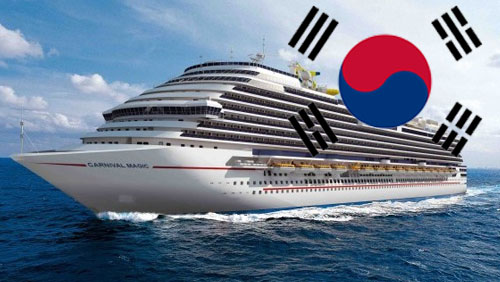 South Korean casino cruise ships for foreign gamblers are set to set sail as early as next year.
South Korean casino cruise ships for foreign gamblers are set to set sail as early as next year.
The Ministry of Oceans and Fisheries announced on Tuesday that an ordinance to allow cruise casinos was approved at the latest cabinet meeting.
The ordinance, which was purposely created to support the cruise tourism industry in South Korea, will take effect August 4 but the government assumed that the casino cruise ships operators will need more time to turn their ships into gambling facilities.
According to the ordinance, the cruise operator should have an “investment appropriate” grade given by credit-rating institutions. The size of the casino will be limited to 2,600 square meters for 100,000+ ton vessels and less than 1,300 square meters for vessels smaller than 100,000 tons.
The casinos must be equipped with foreign currency exchange booths and an internal computing system accredited by the Tourism Ministry. They will be prohibited from operating in South Korean territorial waters.
The government expects the casino cruise ships to generate 1 trillion won ($864m) and to create 8,000 new jobs by 2020 but analysts said that it may have a smaller impact than expected since the locals are still not allowed to enter such gambling facilities.
In May, Oceans and Fisheries Minister Yoo Ki-june decided to make an amendment to allow locals to enter the casino cruise ships and play for a limited number of hours and amount of bets.
The Ministry of Culture, Sports and Tourism, which issues casino licenses, put the brakes on the marine minister’s move, saying there’d been no discussion on allowing locals to access onboard gambling. The measure also received opposition from the residents of Jeongseon – the home of Kangwon Land Resort, the only casino in the country that allows Korean to gamble – who believed that allowing locals in cruise casinos would deal a blow to Kangwon Land’s profitability.
The government allowed Kangwon Land to open to locals on conditions that part of its revenue will be used to help ailing former miners and others suffering from financial hardship in the wake of the local mine’s closure.





